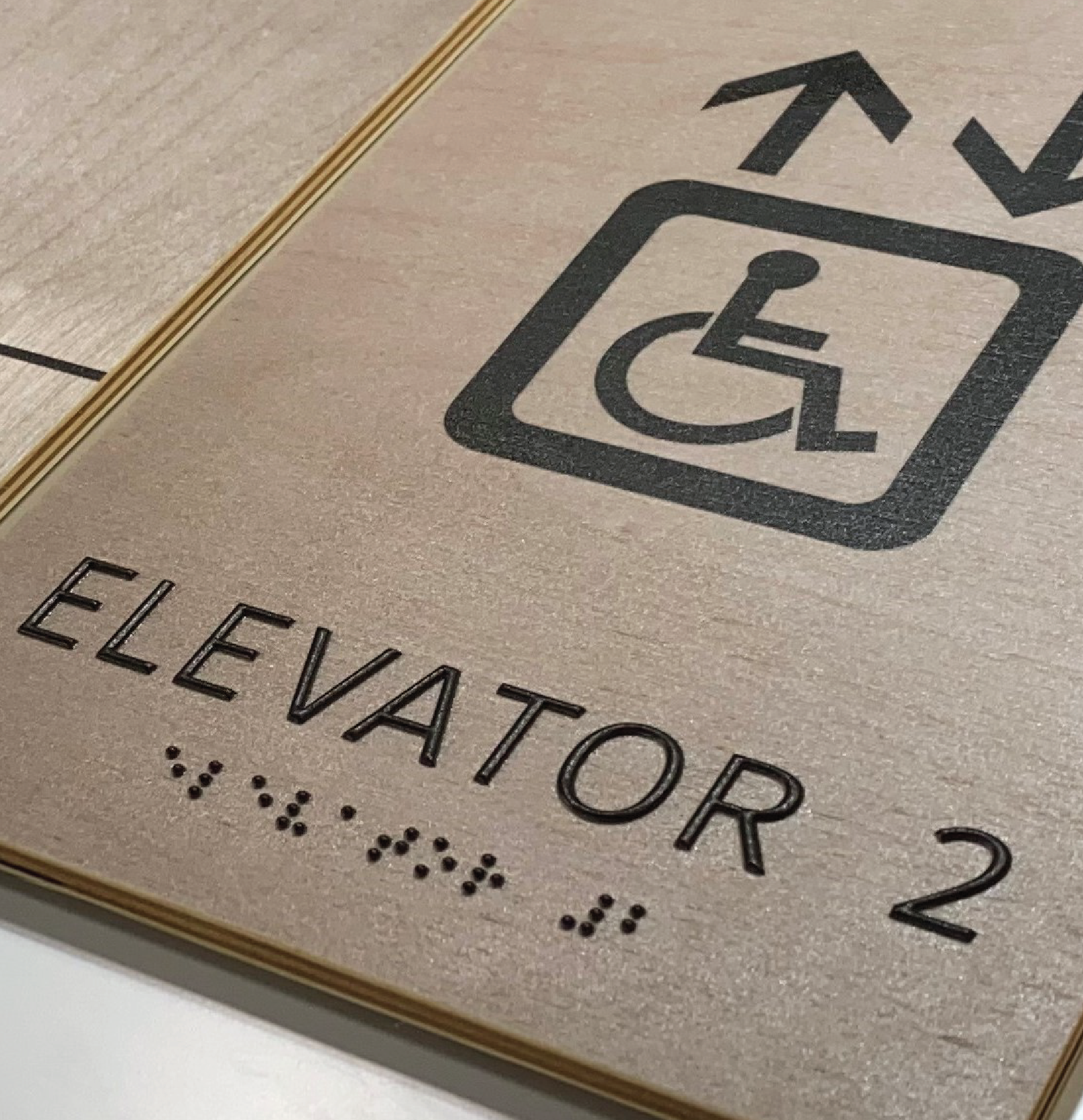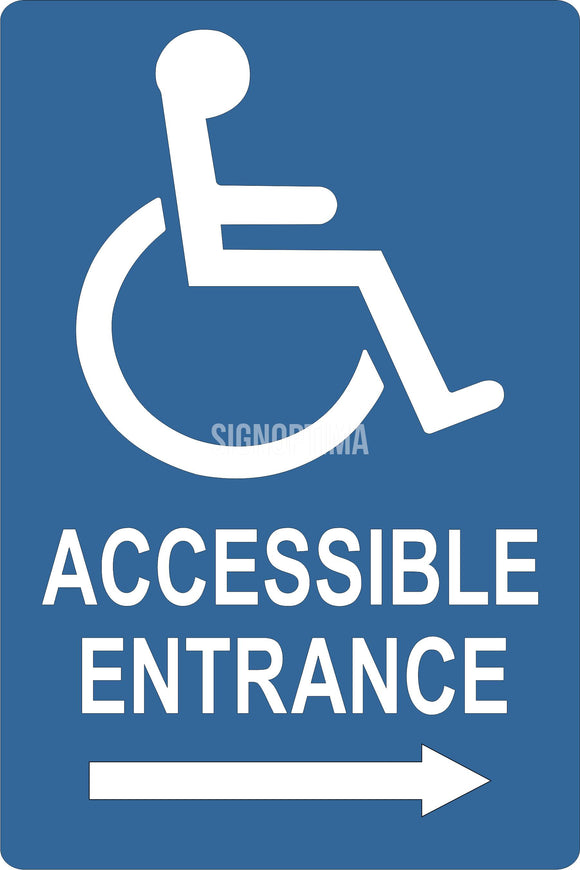A Comprehensive Overview to Choosing the Right ADA Signs
A Comprehensive Overview to Choosing the Right ADA Signs
Blog Article
Checking Out the Key Functions of ADA Signs for Boosted Availability
In the realm of accessibility, ADA signs serve as quiet yet effective allies, making sure that spaces are accessible and inclusive for individuals with impairments. By incorporating Braille and responsive elements, these indicators break barriers for the visually impaired, while high-contrast shade schemes and clear typefaces cater to varied visual needs.
Significance of ADA Compliance
Guaranteeing compliance with the Americans with Disabilities Act (ADA) is critical for promoting inclusivity and equal access in public areas and offices. The ADA, passed in 1990, mandates that all public facilities, employers, and transport services accommodate people with specials needs, guaranteeing they appreciate the same legal rights and chances as others. Conformity with ADA standards not just satisfies lawful responsibilities however likewise enhances a company's reputation by demonstrating its commitment to variety and inclusivity.
Among the vital elements of ADA compliance is the implementation of easily accessible signage. ADA indicators are made to make sure that individuals with specials needs can quickly navigate with areas and buildings. These indicators should follow specific guidelines pertaining to size, typeface, shade contrast, and positioning to guarantee presence and readability for all. Properly executed ADA signs aids eliminate obstacles that individuals with disabilities usually run into, therefore advertising their freedom and confidence (ADA Signs).
In addition, adhering to ADA guidelines can reduce the danger of legal consequences and possible fines. Organizations that fall short to comply with ADA guidelines may face legal actions or penalties, which can be both damaging and monetarily challenging to their public photo. Hence, ADA conformity is indispensable to fostering an equitable setting for every person.
Braille and Tactile Aspects
The unification of Braille and tactile components right into ADA signage embodies the principles of availability and inclusivity. These features are important for people who are blind or aesthetically impaired, enabling them to navigate public areas with greater independence and self-confidence. Braille, a tactile writing system, is important in supplying written details in a style that can be easily viewed via touch. It is usually placed beneath the matching message on signs to make certain that people can access the info without visual help.
Tactile components extend beyond Braille and include raised characters and symbols. These elements are created to be noticeable by touch, allowing individuals to determine space numbers, toilets, leaves, and other important locations. The ADA establishes particular standards relating to the dimension, spacing, and positioning of these responsive elements to enhance readability and make certain consistency throughout different environments.

High-Contrast Color Design
High-contrast color pattern play a pivotal duty in improving the presence and readability of ADA signage for people with aesthetic disabilities. These systems are necessary as they maximize the distinction in light reflectance between text and background, guaranteeing that signs are easily discernible, also from a distance. The Americans with Disabilities Act (ADA) mandates making use of specific shade contrasts to fit those with limited vision, making it a crucial facet of conformity.
The efficiency of high-contrast colors lies in their capacity to stick out in different illumination conditions, consisting of poorly lit atmospheres and areas with glow. Normally, dark message on a light history or light text on a dark background is used to accomplish ideal comparison. Black text on a yellow or white history offers a stark visual difference that helps in fast acknowledgment and understanding.

Legible Fonts and Text Size
When taking into consideration the layout of ADA signs, the selection of understandable font styles and ideal message dimension can not be overstated. These components are important for making certain that indicators are available to individuals with aesthetic impairments. The Americans with Disabilities Act (ADA) mandates that font styles have look at more info to be not italic and sans-serif, oblique, manuscript, highly ornamental, or of unusual form. These requirements help guarantee that the message is quickly readable from a distance which the personalities are distinguishable to varied audiences.
According to ADA guidelines, the minimum message elevation should be 5/8 look at this website inch, and it ought to boost proportionally with seeing range. Uniformity in message size adds to a cohesive visual experience, helping people in navigating environments effectively.
In addition, spacing in between lines and letters is important to legibility. Appropriate spacing protects against personalities from showing up crowded, enhancing readability. By sticking to these standards, designers can considerably improve access, making sure that signage serves its designated objective for all individuals, regardless of their aesthetic abilities.
Effective Positioning Strategies
Strategic placement of ADA signage is important for making the most of access and making certain conformity with lawful standards. ADA standards specify that indications ought to be placed at a height in between 48 to 60 inches from the ground to ensure they are within the line of view for both standing and seated individuals.
Furthermore, indications must be put surrounding to the latch side of doors to permit simple identification before entrance. Uniformity in indication positioning throughout a facility boosts predictability, minimizing complication and boosting total customer experience.

Conclusion
ADA indicators play an essential duty in advertising ease of access by integrating attributes that deal with the needs of individuals with disabilities. Including Braille and responsive elements makes certain vital info comes to the visually damaged, while high-contrast color pattern and clear sans-serif fonts boost presence across different illumination problems. Effective positioning techniques, such as appropriate placing heights and tactical locations, even more help with navigating. These elements collectively promote a comprehensive setting, emphasizing the importance of ADA conformity in ensuring equal gain access to for all.
In the realm of accessibility, ADA indications serve as silent yet effective allies, making sure that areas are comprehensive and navigable for individuals with impairments. The ADA, enacted in 1990, mandates that all public centers, employers, and transport solutions accommodate individuals with impairments, ensuring they delight in the exact same civil liberties and possibilities as others. ADA Signs. ADA indications are review made to make certain that people with disabilities can quickly navigate with spaces and buildings. ADA standards specify that signs need to be installed at an elevation in between 48 to 60 inches from the ground to guarantee they are within the line of view for both standing and seated individuals.ADA signs play a vital function in promoting availability by incorporating functions that attend to the demands of people with disabilities
Report this page